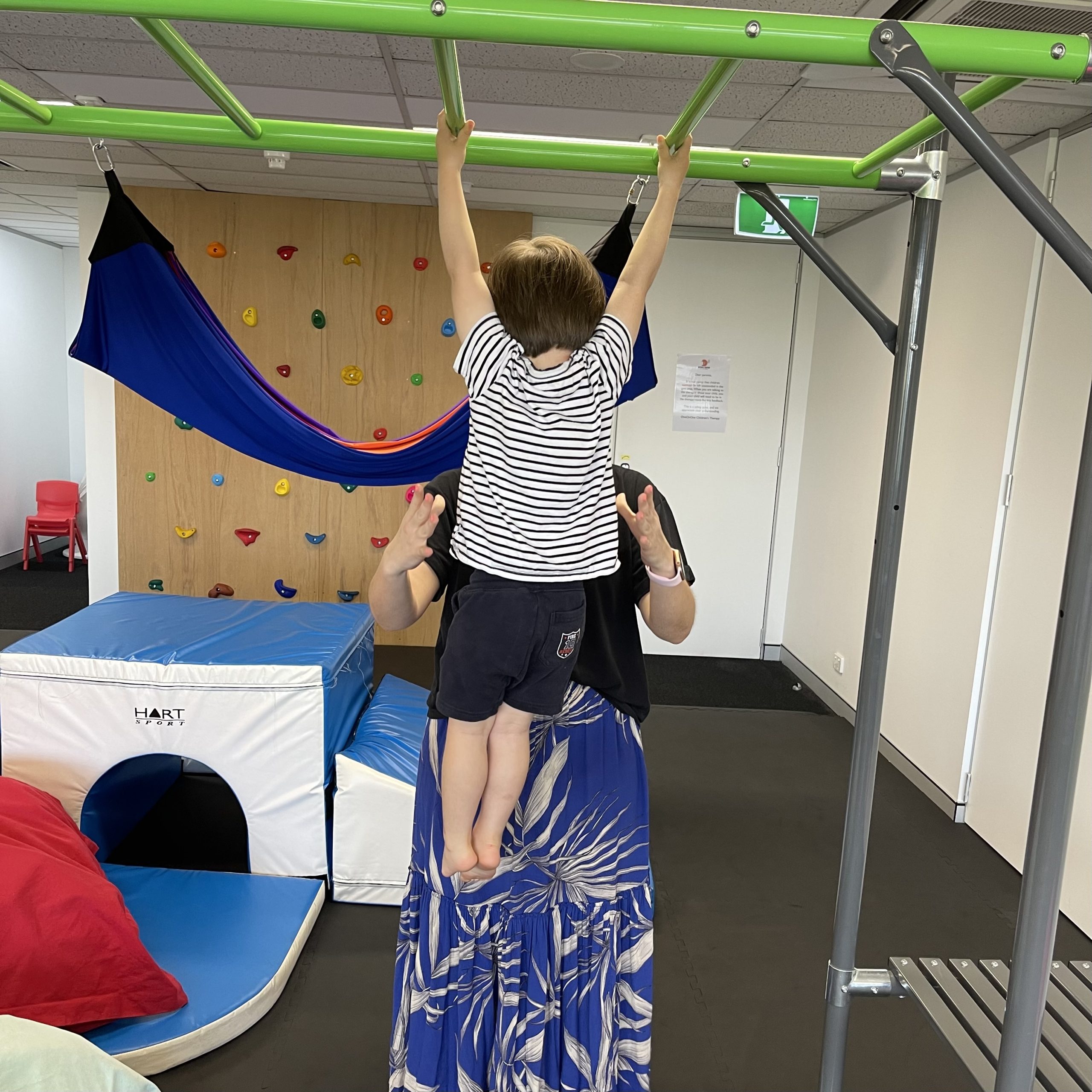
What is bilateral co-ordination?
Bilateral co-ordination is the ability to use both sides of your body at the same time in a co-ordinated way. You need bilateral coordination for all parts of your body. This includes using your legs in a co-ordinated way so you can walk, using your eyes so you can see, and using your hands so you can do up buttons and zippers. With good bilateral co-ordination, it means that both sides of your brain are communicating and sharing information.
As a child develops good bilateral co-ordination they can move one side of the body whilst they stabilise themselves with the other side of the body. Children do this when they hop and when they cut.
Body awareness also helps
Body awareness is an important part of bilateral co-ordination. It refers to the ability to know where your body is in space without necessarily using your eyes. It involves proprioception, which is the feedback you get from your muscle and joints. Children who do not have adequate body awareness may appear a bit clumsy. They can also be cautious with movement or fearful when their feet come off the ground (e.g. on a swing). Children with poor bilateral co-ordination may be a bit rough when they are playing with their friends. Children who do not have a good sense of where their body or body parts’ are in space can have difficulty doing activities that require the co-ordination of both sides of their body. You may see this when they try to catch a ball with two hands.
Midline crossing is important too
Crossing the midline is another important aspect of bilateral coordination. Imagine a line down the middle of your body. When a child crosses the midline it means they can reach across from one side of their body to the other to draw a line across a page without having to change hands. They can also put their shoes and socks on with both hands and hit a tennis ball with a racquet. Children who can’t cross the midline tend to have delays in gross and fine motor skills. They also don’t develop a preference for writing with their left or right hand, and change hands when they are drawing or writing.
How does bilateral co-ordination develop
Children develop bilateral co-ordination when start to use both hands together symmetrically to banging toys together. You can see it when they start to clap. Then they start to hold one hand still while the other moves. You will see this when they pick up two pieces of a shape sorter. One hand waits while the other hand puts the shape sorter in. Finally, the child will do two completely different things with both hands to complete an activity. This happens when they cut. One hand opens and closes the scissors while the other hand holds the paper.
The impact of poor bilateral co-ordination
Children who have difficulty coordinating both sides of their body can have difficulty completing self care tasks (dressing, tying shoes), fine motor activities (banging blocks together, stringing beads, buttoning), visual motor tasks (drawing, writing, cutting, catching/ throwing), and gross motor activities (crawling, walking, climbing stairs, riding a bike).
How do you treat bilateral co-ordination issues
Occupational Therapists work with children who have challenges in this area. After a thorough assessment of the child’s skills, a program is developed to build body awareness, ensure the child is crossing the midline, and that they can perform bilateral activities.
Some children need a short period of Occupational Therapy. Some children take longer to learn the skills.
OneOnOne Children’s Therapy is a Occupational Therapy, Speech Pathology and ESDM clinic in Bondi Junction in Sydney’s Eastern Suburbs. We can be contacted on (02) 80657837 or by email.
